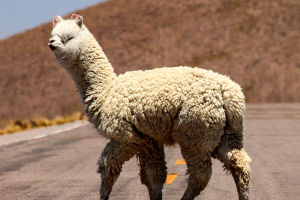As the demand for animal fur has declined and concerns about animal health and welfare have increased, alpaca shearing has become a common practice.
However, while it may seem simple on the surface, shaving an alpaca requires care and professional skills to ensure a smooth shaving process and protect the alpaca's health and comfort.
This article will introduce how to scientifically shear an alpaca, including preparations, tips, and precautions during the shearing process.
1. Preparatory Work
Before embarking on shearing your alpaca, being fully prepared is essential. This involves:
1. Choosing the Right Time: The optimal time for shearing alpacas is during warm weather, ensuring they can quickly acclimate to temperature changes after shearing. Spring or summer is the ideal season for shearing.
2. Preparing Tools: Ensure you have all the necessary shearing tools, including professional alpaca clippers, shearing shears, combs, etc. These tools should be kept clean and sharp to facilitate a smooth shearing.
3. Selecting the Proper Location: Perform the shearing in a quiet, spacious, and clean area to ensure the alpaca's comfort and safety throughout the process.
2. Techniques During the Shearing Process
Shearing an alpaca is a task that demands patience and skill. Here are some key tips for successful shearing:
1. Handle with Gentleness: Throughout the shearing process, handle your alpaca gently, avoiding excessive pulling or applying too much pressure. This helps reduce the alpaca's nervousness and stress.
2. Follow Correct Shearing Direction: When shearing, follow the direction of the alpaca's hair growth. This ensures a more uniform shearing effect and minimizes unnecessary stimulation.
3. Work in Sections: Divide the alpaca's body into several parts and shear them in sections. This approach facilitates an orderly shearing process and reduces the alpaca's discomfort.
4. Pay Attention to Detail: During shearing, close attention to the areas around the head and feet to ensure a natural and even shearing effect.
3. Precautions
When shearing an alpaca, it's crucial to observe certain precautions to ensure a safe and effective shearing process:
1. Avoid Over-shearing: Refrain from over-shearing to prevent compromising the alpaca's warmth and skin health. Generally, avoid shearing too close to the skin, as maintaining a certain amount of hair helps protect the skin.
2. Monitor for Skin Issues: Throughout the shearing process, closely monitor the alpaca's skin condition, promptly identifying and addressing any skin problems such as trauma or inflammation.
3. Maintain Hygiene: Maintain Hygiene during the shearing process by ensuring the cleanliness of the shearing tools and the workspace. This helps prevent cross-infection and skin issues.
4. Provide Timely Nutritional Support: Following shearing, provide the alpaca with timely nutritional support to aid recovery and hair regrowth. This includes providing ample water and high-quality feed.
Conclusion
Shearing an alpaca scientifically requires skill and care. With adequate preparation, proper technique, and adherence to critical considerations, you can ensure a smooth shearing process while safeguarding your alpaca's health and comfort.
Throughout the shearing process, prioritizing gentleness, attention to detail, and hygiene is essential for ensuring its safety and effectiveness.


